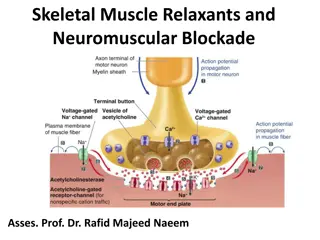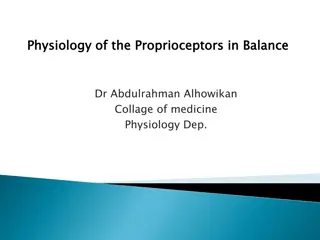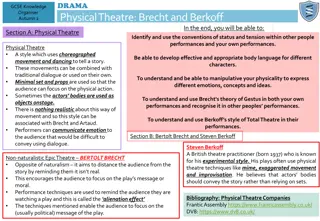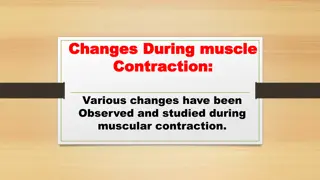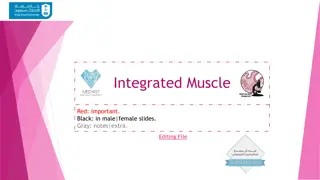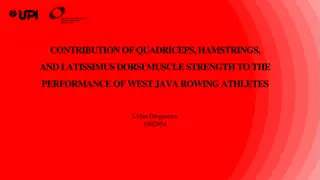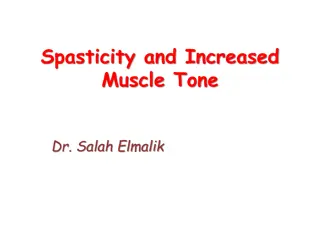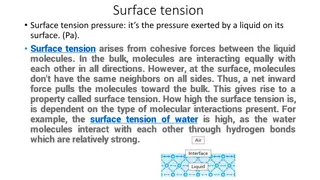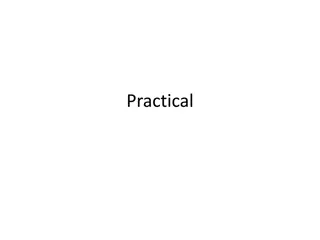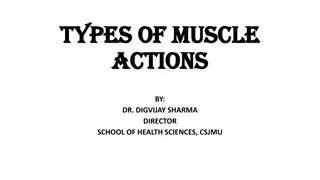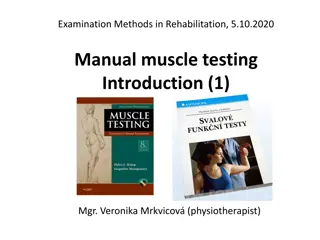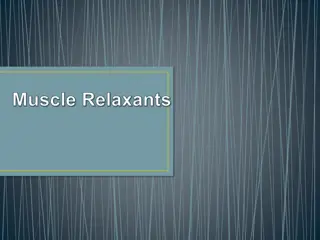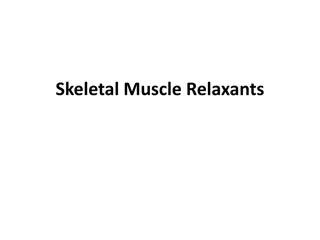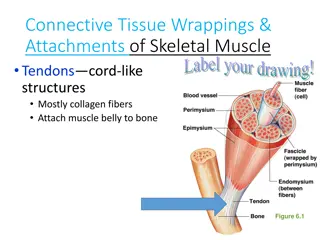Muscle Functions and Tension Development
Muscle functions are crucial for movement and stability in the body. Muscle tension plays a key role in exerting force on bones through passive and active mechanisms. Passive tension arises from non-contractile components, while active tension is generated by contractile elements. Factors influencing active tension include motor unit size, muscle fiber number, firing frequency, sarcomere length, fiber arrangement, type of muscle contraction, and speed of movement. Understanding these concepts is essential for optimizing muscle performance.
Download Presentation

Please find below an Image/Link to download the presentation.
The content on the website is provided AS IS for your information and personal use only. It may not be sold, licensed, or shared on other websites without obtaining consent from the author.If you encounter any issues during the download, it is possible that the publisher has removed the file from their server.
You are allowed to download the files provided on this website for personal or commercial use, subject to the condition that they are used lawfully. All files are the property of their respective owners.
The content on the website is provided AS IS for your information and personal use only. It may not be sold, licensed, or shared on other websites without obtaining consent from the author.
E N D
Presentation Transcript
MUSCULAR FUNCTIONS MUSCULAR FUNCTIONS BY: DR. DIGVIJAY SHARMA DIRECTOR SCHOOL OF HEALTH SCIENCES, CSJMU
Muscle tension Muscle tension The most important characteristic of a muscle is its ability to develop tension and to exert a force on the bony lever. The lever may be: Passive tension Active tension
Passive tension Passive tension Passive tension refers to tension develop in the passive non- contractile components of the muscle Contractile components of the muscle It develops in the parallel elastic component is created by lengthening the muscle beyond the slack length of the tissues The total tension that develops during an active contraction of a muscle is a combination of the non-contractile (Passive) tension added to the contractile (active) tension
active tension active tension It refers to tension developed by the contractile elements of the muscle Active tension in a muscle is initiated by cross bridge formation and movement of thin filament over thick filament
Factors affecting active tension Factors affecting active tension 1. Size of motor unit- larger unit produces greater tension 2. Number and size of muscle fibre in a cross- section of the muscle- the larger the cross section the greater the tension 3. Number of motor unit firing- the greater the number of motor units firing in a muscle greater the tension 4. Frequency of firing of a motor unit- greater the frequency, the greater the tension 5. Sarcomere length- the closer the optimal length, the greater the amount of isometric tension that can be generated
6. Fibre arrangement- a pennate fibre arrangement gives a greater number of muscle fibre and therefore a greater amount of tension is generated than in a parallel muscle 7. Type of muscle contraction- an isometric contraction can develop greater tension than a concentric, eccentric contraction can develop greater tension than an isometric contraction. 8. Speed- as the speed of the shortening increases, tension decreases in concentric contraction. As the speed of active lengthening increases, tension in an eccentric contraction increases


